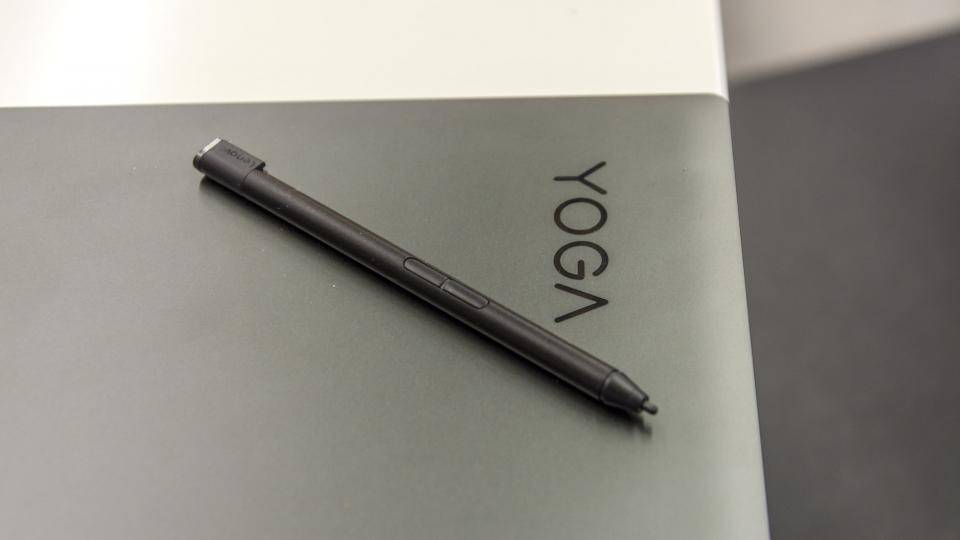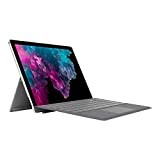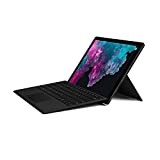Lenovo first introduced the Yoga C930 during its keynote event at IFA 2018. Five months after that sneak peek, and after a great deal of anticipation, it’s finally arrived at the Expert Reviews labs. Not to be confused with the Yoga Book C930 , the Yoga C930 is the larger and pricier of Lenovo’s two new flexible 2-in-1 laptops.
It’s also not your average 2-in-1 convertible, being billed more as an all-in-one entertainment hub. Lenovo’s not the first manufacturer to make such a claim, however, so is this really the perfect device for watching content on-the-go?
READ NEXT: The best laptops you can buy today
Lenovo Yoga C930 review: What you need to know
Like all previous entries in the Yoga series, the Yoga C930 is a 2-in-1 hybrid laptop that doubles up as a tablet thanks to its capacitive touchscreen. It comes with a bundled ‘garaged’ stylus which slots into the laptop’s rear edge and charges when stored, and the 360-degree hinge has undergone a total makeover – the Dolby Atmos speaker and the hinge have been combined into a single unit.

Lenovo’s Yoga C930 has a 13.9in IPS touchscreen that’s LED-backlit. The review unit sent to the Expert Reviews labs has a 1,920 x 1,080 (FHD) display and is on the cheaper end of the scale compared to the 4K loadout (complete with Dolby Vision) that I previewed at IFA 2018. This review model runs on an 8th-Gen Intel Core i5-8250U processor and 8GB RAM and has 512GB PCIe SSD. This version ships with Windows 10 Home, though you can opt for the high-end Core i7-8550U version with Windows 10 Pro.
Though it’s a well-made laptop with some interesting, innovative features the Yoga C930 doesn’t come cheap, and in 2019 there are plenty of other excellent 2-in-1s vying for your attention.
Buy now from Very
Lenovo Yoga C930 review: Price and competition
This configuration of the Yoga C930 has an FHD display, Intel Core i5-8250U, 8GB RAM and 512GB SSD. Right now it only seems to be available from Very to the tune of £1,300 . That’s awfully pricey for a laptop that only packs an Intel Core i5 chip, and the base model isn’t much less at £1,200. It has all the same specs as this Yoga C930 review model apart from a halved storage size of 256GB SSD.
For a top-end model with a 4K Dolby Vision display, Intel Core i7-8550U CPU, 16GB RAM and 512GB SSD, Lenovo is charging £1,600 . For the best film-watching experience possible that’s going to be the model to go for but it’s hard to recommend at that price. Even £1,200 for the base spec seems steep, especially considering what you get with other 2-in-1 laptops on the market.
Another of Lenovo’s laptops, the Yoga 730 15in , is a fierce contender; at £1,500 for the top-spec 4K model with an Intel Core i7-8550U and Nvidia GeForce GTX 1050 graphics, it’s arguably better value for money. Then again, battery life isn’t up to scratch and it lacks the Dolby Atmos speaker hinge.


Microsoft’s Surface Pro 6 is something of a crowd favourite and hovers around the same price bracket. The model I reviewed goes for £1,150 but, crucially, that doesn’t include the stylus and type cover – sold separately – and for the full kit, you’ll pay £1,375. The smaller form factor makes it extremely portable but in performance terms it’s not as nippy as the Yoga C930. Again, it’s speakers are no match for the Dolby Atmos soundbar.
Lenovo Yoga C930 review: Design
Apart from the hinge the C930 still has the classic Lenovo Yoga design. It’s a sleek and reasonably lightweight (1.38kg) 2-in-1 with a chassis hewn from aluminium and comes in two colours: the unadventurous iron grey seen in my photos or a more eye-catching off-white finish called mica.
That rotating soundbar really is the most noteworthy element of the Yoga C930 – you might even say that the whole laptop revolves around it. According to Lenovo, the hinge speaker design is the first of its kind and it sets the Yoga C930 apart from the pack. It’s a pretty, shiny silver unit with a silky-smooth rotation.
I found the Yoga C930 to be quite slippy when I was using its touchscreen in tent mode and, in future, it wouldn’t hurt to have grippy, rubberised corners to stop the laptop sliding across the desktop during Candy Crush sessions. The bundled stylus that comes with the Lenovo Yoga C930 slides into a slot on the laptop’s rear edge, on the left-hand side. When folded in tent mode the stylus slot is above the screen.
A free stylus is always welcome (such things are few and far between these days) and the fact that it charges while docked makes life much simpler for the user. To remove the stylus only requires a small push downwards, causing it to spring up and out of its slot. Unsheathing it from there is tricker – you need to dig in a fingernail because it’s too small and slick to grip between finger and thumb.
The Yoga C930’s digital pen is on the smaller, thinner side and feels like cheap plastic. The buttons which serve as mouse clickers work well and are sensibly located but I still occasionally clicked them accidentally while writing on the screen, probably because the stylus is so small.
It’s a shame about the lack of ports on the Yoga C930. They are limited to one USB 3.1 port, two USB Type-Cs with Thunderbolt 3 and, lastly, a 3.5mm audio jack, all located on the left edge. The power button is side-mounted on the right edge.
Still, there’s one more neat feature that deserves a mention: the webcam shutter above the display. The shutter first appeared on Lenovo’s ThinkPad range and the manufacturer now seems to be implementing it on more and more of its devices. If you’re privacy conscious this is a real boon as there’s no longer a need for an unsightly lump of Blu Tack over the webcam.
READ NEXT: Lenovo laptop numbers explained
Lenovo Yoga C930: Dolby Atmos speakers
The Dolby Atmos speakers on the Yoga C930 are by some margin the best I’ve heard on a laptop. Lenovo worked with Dolby to create an ‘industry first’ soundbar hinge that contains two speakers with down-firing woofers and no matter how the laptop is rotated the speakers still point towards the user. Dolby’s ‘3-dimensional sound’ really can fill out a room; there’s an impressive level of volume here, with enough bass kick to rival a small-to-medium-sized Bluetooth speaker.
Classical music, bass-heavy hip-hop and weighty metal riffs all sound excellent, coming through with power and clarity. There’s even an impressive amount of rumble that emanates from the woofers, which adds an atmospheric element when watching films and TV shows. For once, here is a laptop that doesn’t need pairing with a wireless speaker to give you a proper music-listening or movie-watching experience.
The speaker system has a multitude of custom options, including dynamic, movie, music and gaming modes. Each of those has three further modes (detailed, balanced and warm) and you can also play around with three personalised equaliser profiles.
Buy now from Very
Lenovo Yoga C930 review: Keyboard and touchpad
Lenovo laptops always seem to have dependable keyboards and there’s certainly nothing wrong with the Yoga C930’s. The chiclet keyboard is laid out well, with plenty of space between keys and travel distance is minimal, which I usually dislike, but in this case lends itself to speedy free-flowing typing. It’s a different experience to typing on the weighty keys of a Lenovo ThinkPad but equally enjoyable. LED backlighting can be turned on or off by tapping Fn + Spacebar, though the actual backlighting isn’t really bright enough to properly illuminate the keys.
Like the keyboard, the touchpad is flawless, though again there’s not much travel when depressing the lower half for left and right clicks. The surface is smooth and sensitive and the touchpad ideally placed; it’s practically centre-on so there’s equal palm rest space for both hands on either side.
To the right of the touchpad, below the keyboard, there’s a square fingerprint sensor which grants a practically instantaneous unlock. I found it reliable and never needed to use my PIN once I’d set up my fingerprint ID.
Lenovo Yoga C930 review: Display
I’m sad to report that the Lenovo Yoga C930’s display quality doesn’t match its audio capabilities. It’s not awful, it’s just not great. On a 1080p YouTube nature video the colours seem vibrant enough and, without a side-by-side comparison with a better screen, there’s a chance you wouldn’t find anything amiss. Yet there are definite issues. For a start, I dislike the glossy finish which reflects and distorts light.
Another problem is that the display has a relatively low maximum brightness of 322cd/m2 and, even indoors, you can make out your reflection in the shiny panel. It’s not that I’m ashamed of my appearance – I just don’t particularly want to see a mirrored image of myself eating popcorn in the middle of a film’s dramatic climax. This will be a problem if you’re planning to watch content on the Yoga C930 outside or if you’re sitting by the window on a plane or train.
The 917:1 contrast ratio is, once again, well below what you’d expect from a £1,300 laptop, resulting in flat images. Colours are off, too; the Yoga C930’s panel produces only 79.5% of the sRGB colour gamut and has an average Delta E (or accuracy) of 3.74. I’ve seen worse but at this price, you’d really hope for better. The panel also struggles to accurately reproduce reds, blues and greens more than other colours. It may not be the best laptop on which to edit photos, then, though in the right lighting conditions it can still give you an acceptable movie-watching experience.
Lenovo Yoga C930 review: Performance and battery life
Although it’s far from the most powerful £1,300 laptop in existence, the Lenovo Yoga C930 held its own across Expert Reviews’ suite of benchmarks. Even with the rather lowly 1.6GHz Intel Core i5-8250U processor backed by 8GB – a bit stingy considering the price – the C930 performed well in our in-house 4K multimedia test, scoring 80 overall.
For reference, the Lenovo Yoga 730 15in scored 105 under the same conditions, and that model has an 8th-Gen Intel Core i7-8550U and double the RAM behind it. Despite also running on an identical Intel Core i5-250U and 8GB RAM the Microsoft Surface Pro 6 lags behind the Yoga C930 with a 4K benchmark result of 69.
My Yoga C930 review unit has a 512GB NVMe SSD, the same as found in the Lenovo Yoga 730 15in. Storage performance is strong when it comes to sequential file read speeds, with a rate of 1,764.6MB/s in the AS SSD benchmark. That’s up to par with the HP Spectre x360 (2018) and not terribly far off the SSD read speed of the Lenovo Yoga 730 15in, which clocked in at 2,423.2MB/s. AS SSD sequential file write speeds aren’t so quick, however, with the Yoga C930 only managing 427.57MB/s. As the chart below shows, that about 25% the sequential file writing speeds of the drive in the Lenovo Yoga 730 15in.
The Yoga C930 isn’t really cut out for high-end gaming; it has no dedicated graphics like the Yoga 730 15in, just the integrated Intel UHD 620 Graphics as part of the i5-8250U chipset. On the other hand, it produced better benchmark results than rivals such as the Surface Pro 6 and Dell XPS 13 2-in-1 . The GFXBench Manhattan on-screen test ran at an average frame rate of 59.8fps (it’s a 60Hz display) and at 64.9fps in the off-screen version.
To get a better idea of how the C930 stacks up against the competition I also ran some DiRT Showdown benchmarks. On high settings, the Yoga C930 ran the 720p DiRT graphics test at an average of 41.2fps, which dropped down to 25.1fps in the 1080p equivalent. The Surface Pro 6 ran the same 720p benchmark at 34.89fps, while the Yoga 730 15in (aided by that Nvidia GeForce GTX 1050 GPU) managed 45.1fps in identical conditions.
The main drawback to gaming on the Yoga C930 is heat; there’s just too much of it. After running DiRT Showdown for about 5mins I noticed a significant rise in temperature around the upper-right section of the keyboard, and towards the hinge and bottom of the screen above that. Using a non-contact infrared thermometer I discovered that this section of the chassis fluctuated between 44-49 degrees Celsius. It became uncomfortable to use on the lap, and it wasn’t pleasant to have my hands near the aforementioned heat zone. CoreTemp did not indicate any worrying spikes in the CPU’s individual core temperatures, so the Yoga C930 does a better job of curtailing heat internally.
To my pleasant surprise, the Lenovo Yoga C930 has outstanding battery efficiency. On a full charge, it was able to play 10hrs 4mins of continuous video – about six hours more than the Yoga 730 15in. It even puts small form factor devices like the Microsoft Surface Pro 6 and Google Pixel Slate to shame. This is a fantastic result for commuters and streaming fiends, who can buy the Yoga C930 in full confidence that it’ll see them through an entire day of content consumption. Of course, this result only applies to the specific Yoga C930 model I’ve tested, and the 4K models probably won’t come close to the 10hrs mark.
Buy now from Very
Lenovo Yoga C930 review: Verdict
Since its initial unveiling at IFA 2018 the Lenovo Yoga C930 looked full of promise and for the most part, it has delivered. Obviously, there are some letdowns like the dim display, the limited number of ports and a tendency to get too hot, and I hope these can all be improved for next year’s model. And yes, it’s pricey too. Yet the Yoga C930 is still a fantastic 2-in-1 machine which boasts the most impressive set of speakers I’ve come across in a laptop to date.
Performance speeds are not bad either, considering it’s only got a 1.6GHz Intel Core i5 chipset, and the battery longevity is superb. What’s more, small touches such as the webcam shutter and self-charging garaged stylus go a long way to enhancing the user experience. Were the screen that little bit better, this would be the perfect 2-in-1 for all your entertainment needs.
|
Lenovo Yoga C930 specifications |
|
Processor |
Intel Core i5-8250U, Quad-Core,1.6GHz, 8th-Gen |
|
RAM |
8GB |
|
Additional memory slots |
0 |
|
Max. memory |
8GB |
|
Screen size |
13.9in |
|
Screen resolution |
1,920 x 1,080 |
|
Pixel density |
158.48 |
|
Screen type |
LCD IPS (LED backlit) |
|
Touchscreen |
Yes |
|
Pointing devices |
Touchpad, touchscreen, stylus |
|
Graphics adapter |
Intel UHD Graphics 620 |
|
Graphics outputs |
USB Type-C (x2) |
|
Graphics memory |
1GB |
|
Storage |
512GB PCIe SSD |
|
Optical drive |
No |
|
Memory card slot |
No |
|
USB ports |
USB Type-C with Thunderbolt 3x 2, USB 3.1 |
|
Other ports |
3.5mm audiuo jack |
|
Web Cam |
720p |
|
Speakers |
Dolby Atmos sound bar |
|
3.5mm headphone jack |
Yes |
|
Wi-Fi |
Dual-band AC WiFi |
|
Bluetooth |
Bluetooth 4.1 |
|
NFC |
No |
|
Dimensions (WDH) |
322 x 227 x 14.5mm |
|
Weight |
1.38kg |
|
Operating system |
Windows 10 Home 64 Bit |
|
Operating system restore option |
Windows restore partition |
|
Battery size |
4-cell Lithium-Polymer |